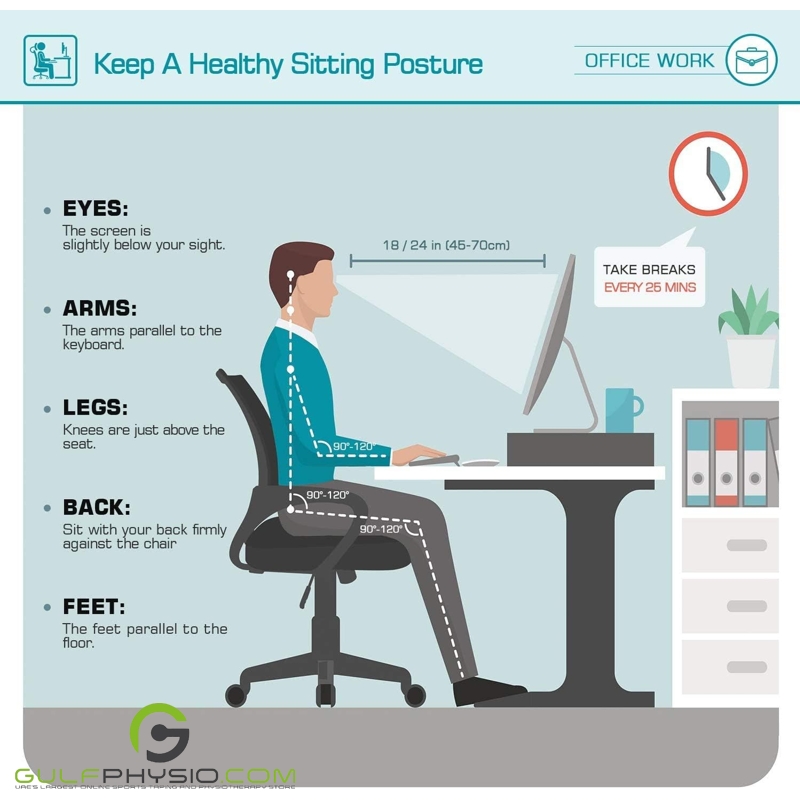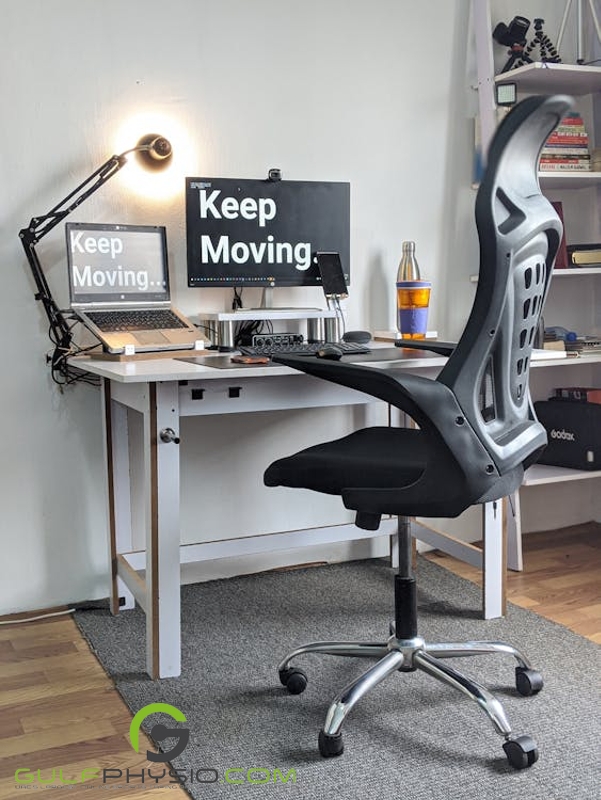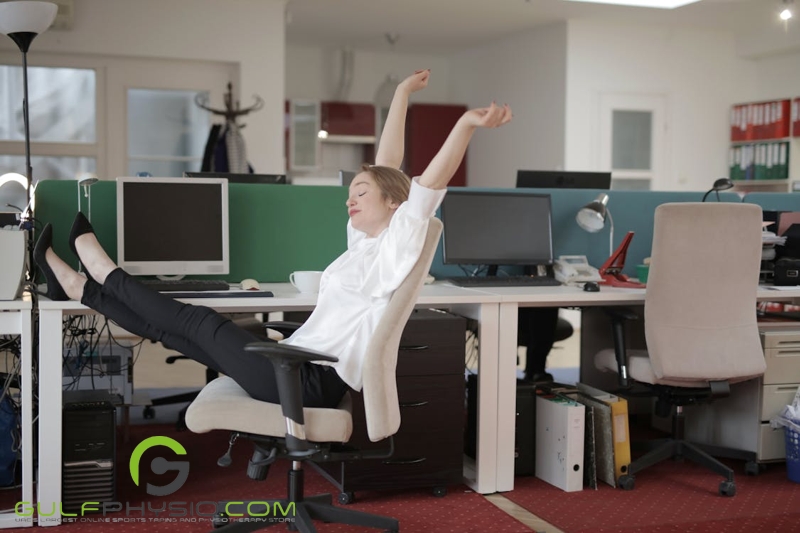Look at this picture:

Now you probably straightened your back after seeing that.
It’s no secret that most of us spend the majority of our day sitting down. According to an article posted in the National Library of Medicine, the average time people spend sitting down globally is approximately 4.7 hours daily. This number is progressively increasing as more countries continue to develop, and populations grow more accustomed to a sedentary lifestyle which increases the risk of developing certain health conditions and diseases.
Back Breaking Business
When someone refers to a job as “back-breaking,” we are more likely to imagine jobs that involve intense physical demands, such as farming or construction work. However, studies have proven that sitting at an office job may be a more apt depiction of the saying. Sitting at an office job can break your back (literally) and send you to an early grave.

Office jobs more often than not require their employees to sit at a desk and work on a computer for several hours a day. Working in this type of environment has been linked to developing unhealthy sedentary behaviors even outside of the workplace as seen in this study published in the BMC Public Health website. As mentioned earlier, adopting sedentary behaviors increases the risk of developing serious diseases and conditions such as diabetes mellitus, dyslipidemia, cancer, musculoskeletal diseases, decline in mental health, etc.
Back Pain and Sedentary Behavior
Another risk of sedentary behavior, especially in the workplace, is developing back pain. A study published in 2019 aimed to discover the relationship between sedentary behavior (specified in this study as excessive sitting) and back pain. Their results found a significant correlation between excessive sitting and back pain affecting the lower and upper back areas. They also found that individuals who regularly engaged in some sort of physical activity experienced back pain significantly less than those who did not engage in any physical activity

Another study conducted in 2021 supports these findings, while also taking into account the effects of the 2020 COVID-19 pandemic on the lifestyle of the general population. This study found that prolonged sedentary behavior (sitting) caused back pain not only in adults but in children and adolescents as well. Furthermore, the research also found that individuals who are of heavier weight are more at risk, leaving them more vulnerable to more serious conditions and diseases.
The Rise of the Work From Home Setup
When the COVID-19 pandemic brought the Earth to a standstill, people’s lifestyles also took a hit. The inability to go outside during lockdown led to the rise of the work-from-home setup, allowing people to conduct business from the comfort of their homes.

Even though things have returned to normal, many people have opted to maintain the work-from-home setup due to the benefits of a flexible work schedule. However, adopting this type of setup also comes with risks. A study from 2021, during the height of the pandemic, concluded that “ Engaging in WFH was associated with less PA and longer SB time during work time, compared with working at worksites.”
Beating Back Pain
While it may not be possible to get up and do some exercise while working at an office, practicing proper posture can help alleviate or prevent back pain.
Proper Sitting Position
Maintaining proper posture while sitting in front of a computer may be difficult and even uncomfortable when you’re not used to it, so there are a few tips to remember.

- Set the chair height so that your knees are parallel to your hips or slightly below your hips, and your feet are flat on the ground.
- Keep your hips far back in the chair and sit up straight.
- Ensure the keyboard is in front of you and at arm’s reach.
- Position the monitor a few inches above eye level in front of you to help maintain a neutral and relaxed neck position.
- The distance between you and the computer screen should be at least 18-24 inches or arm’s length.
- Throughout the workday, let your shoulders drop and pay attention to whether they are rounded forward or rising toward your ears.
Office Chair Exercises
Another option to avoid back pain and other health complications while seated at a desk is office chair exercises and stretches. These are quick and easy movements that will help with muscle pain and stiffness.

Seated Marches
- Raise one knee toward the ceiling while seated comfortably in a chair
- Raise your knee as high as comfortably possible, then hold the position for 8-10 seconds
- Slowly relax your foot back onto the floor
- Repeat with the other foot
- Complete 30 repetitions
Figure-four stretch
- Sit in a chair with your feet flat on the floor
- Position one foot over the opposite knee, then lean forward slightly
- Maintain this position for 20-30 seconds
- Switch legs and repeat.
- Complete 3 repetitions
Seated Hamstring Stretch
- While seated at the edge of your chair, stretch one leg out in front of you while resting your heel on the floor
- Bend forward from your hips while leaning your chest forward
- Take deep breaths and hold for 30 seconds
- Repeat with the opposite leg
- Do 2-3 times per day
Ergonomic Office Equipment
A more recent development in battling muscle pain in the office is the invention of ergonomic office equipment. These specialized furniture aim to reduce pain, support posture, and boost an individual’s productivity.

Ergonomic Office Chairs
Arguably the most popular piece of ergonomic furniture is the office chair. In a setting where individuals are seated all day, it isn’t a surprise that the first thing designers would want to focus on are the chairs. A study conducted in 2012 found that ergonomic seating improved musculoskeletal symptoms among workers who are required to sit for prolonged periods.
Standing Desks
Another piece of ergonomic furniture that has become all the rage is standing desks. According to Harvard Health Publishing, standing desks can reduce the risk of developing serious health conditions such as diabetes, cardiovascular disease, obesity, and cancer.
In Summary
Globally, people sit for an average of 4.7 hours per day, and as more nations grow, so do sedentary habits. Employees in office occupations frequently spend many hours a day sitting at a desk using computers, which increases the risk of acquiring major medical conditions and encourages unhealthy sedentary behaviors. An additional concern is back pain, which has been linked in studies to prolonged sitting.

Maintaining good posture can help avoid or lessen back pain. For stiffness and soreness in the muscles, office chair stretches and exercises can be helpful. Office chairs and standing desks are examples of ergonomic office equipment that can help lower the risk of major illnesses like diabetes, heart disease, obesity, and cancer.
Want to learn more about health, pain management, and disease? Then read our articles “Physiotherapist’s Best Ways to Prevent Tech Neck and Improve Posture” and “Physiotherapist Shares Tips on Better Posture and Stretching on the Road”.
Disclaimer
GulfPhysio.com and all of its content are for informational purposes only. All information is believed to be accurate at the time of posting and should NOT be taken as professional medical advice. Please seek a medical professional in the event of pain or injury.



